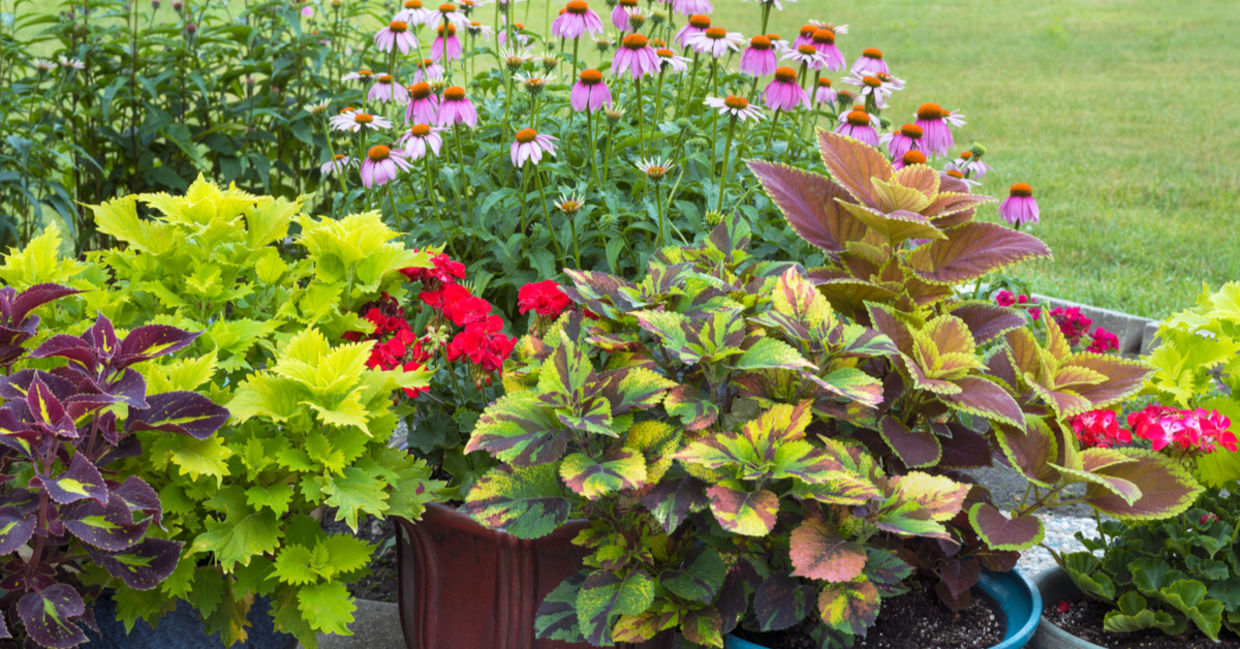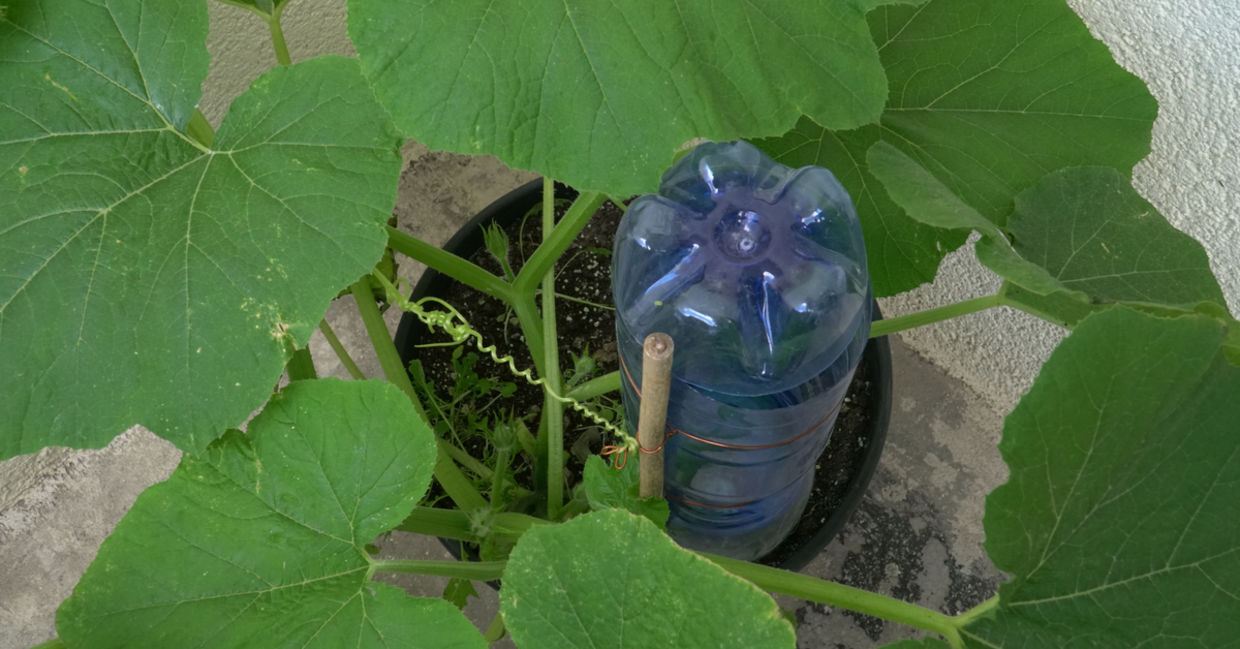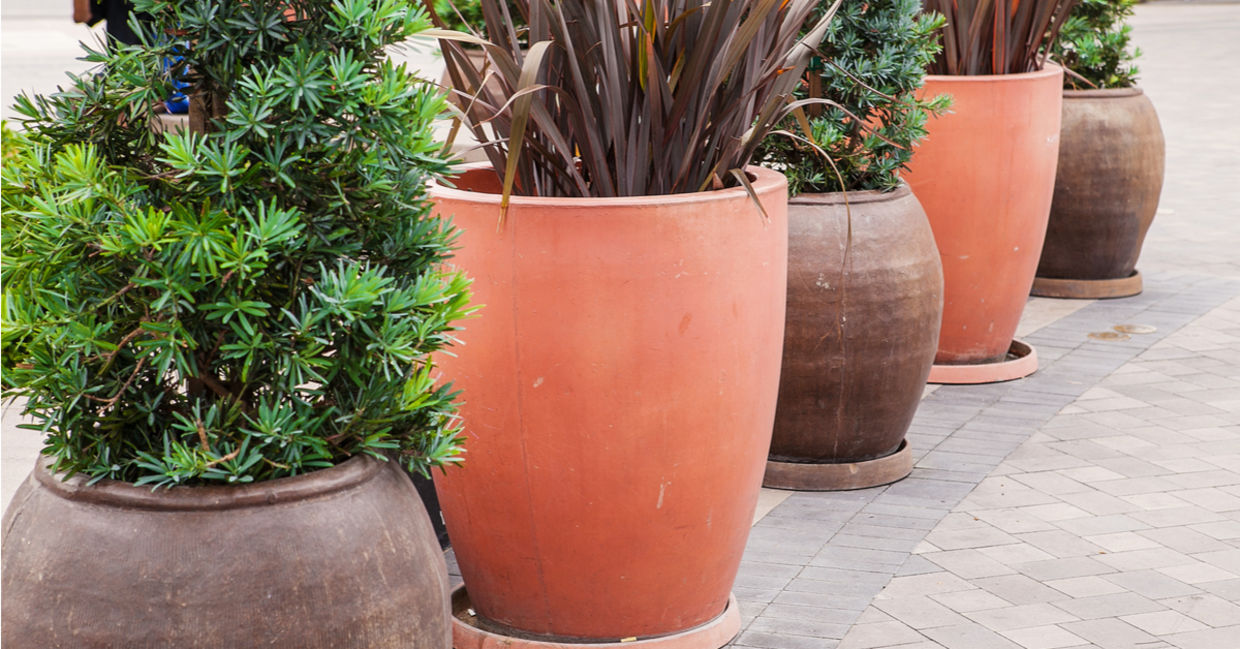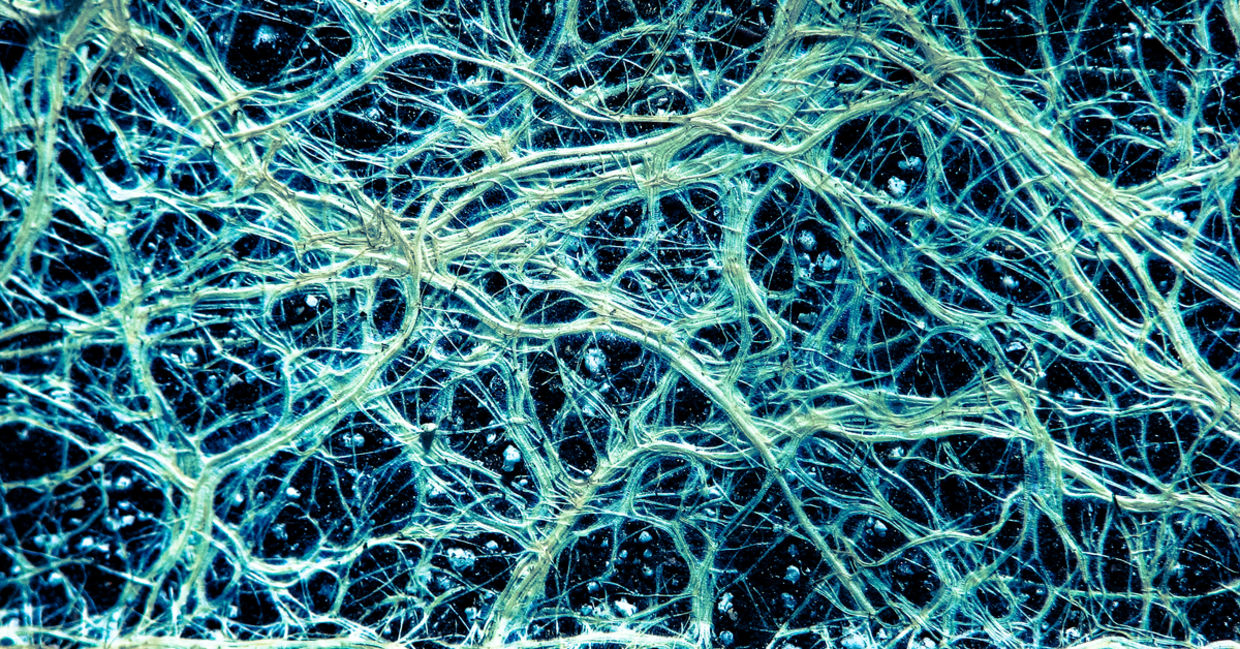
(true nature / Shutterstock.com)
Potted plants beautify all living spaces. Be it a balcony, front porch, or window sill, plants add life and natural charm to your home and outdoor space. The catch is, they need water! It is easy to forget to water them, and what happens when you are away?
Here are five ingenious ways to give your plants more independence so they do not have to rely on their owners! A few of these methods recycle plastic bottles, helping the environment. You will also save precious water and ensure that the water goes directly to the roots. Just remember to test your watering system before you go away.
Plastic bottle method
This system, explained in a Dragos Ion video, will ensure your plants are well watered for up to a week. Take a 1.5 or 2-liter water bottle and pierce the cap with a hot needle to make small holes. Fill with water and cap the bottle to create a vacuum. Place it upside down in the soil and stake it with tape or wire so it is secure. Using capillary action, the dry soil will take the moisture from the bottle.
If you use this method outdoors, a regular bottle can keep a 3 to 6-foot square garden watered for up to three days. If the top tends to clog up with soil, use a mesh opening instead. Using a wine bottle with holes pierced in a screw top is another effective method.

(ULD media / Shutterstock.com)
String drip system
This easy watering method is from a Jaw-Dropping Facts video. Place a cotton string into the bottom of the planter, then place the other end in a large jug of water. The mouth of the pitcher must be above the base of the plants. You may have to weigh down the string so it stays at the bottom of the pitcher. Again, capillary action will force the water from the jar to the plant.
View this post on Instagram
If you want to water several pots at once, position the pitcher in the center and have one string leading from the pitcher to each pot. To minimize evaporation when plants are outside, and to ensure the string does not get dry in the hot sun, it is recommended that you cover the jug.
Burying a bottle
This tip from Jaw-Dropping Facts is yet another easy way to water plants without having to water them yourself! Take a 1 or 2-liter water bottle and make holes in the sides with a hammer and nails. It is best to make five on the bottom and three or four on the sides. Bury the bottle in the soil with its neck exposed. Position it so the watering holes are directed to the plants.
Water your plants before placing the bottle in the soil or they will take all the water right away. You need several holes in order for water to exit or algae may form inside the bottle. If you want to slow the water flow, place the cap on the bottle.
The saucer method
It is always a good idea to place a saucer under each potted plant, especially if you are an absent-minded waterer. This is especially handy for outdoor plants as rain water will collect in the saucer. If you are going away, use a deep saucer, fill it with water, and water the plant well. If you have many potted plants, place them together in a child’s wading pool and treat it like a giant saucer. Before you go away, remember to move plants into the shade to avoid evaporation. Depending on the heat, this should last you a few days.

(MILA Zed / Shutterstock.com)
Fortify with fungus
Using mycorrhizae helps keep your plants moist and healthy, according to Rural Sprout. Mycorrhizae are microscopic fungi that attach to roots and may increase the root system by a hundred times. With more roots, the plant can access more moisture and nutrients. You can purchase a water-soluble mycorrhizae formula and add it to the soil close to the roots. Add the fungus a few days before you go away. You may return to find that your plants have doubled in size!

(Fly Dragon Fly / Shutterstock.com)







